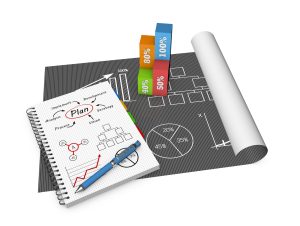Using DMAIC for Project Management
 Managing work for a project generally falls to the Project Manager or Project Lead. As a Lean Six Sigma practitioner, there is a likely chance that you will be in that role at some point in your career. There are many ways to approach managing a project, including the widely used Project Management Book of Knowledge (PMBOK), among project managers. In recent years, many similarities between Six Sigma’s DMAIC methodology and the PMBOK have been noted. From a high-level view, both the PMBOK and Six Sigma’s DMAIC methods focus on creating a vetted plan of action, managing timelines and resources, and communicating change to key stakeholders throughout a project’s lifecycle.
Managing work for a project generally falls to the Project Manager or Project Lead. As a Lean Six Sigma practitioner, there is a likely chance that you will be in that role at some point in your career. There are many ways to approach managing a project, including the widely used Project Management Book of Knowledge (PMBOK), among project managers. In recent years, many similarities between Six Sigma’s DMAIC methodology and the PMBOK have been noted. From a high-level view, both the PMBOK and Six Sigma’s DMAIC methods focus on creating a vetted plan of action, managing timelines and resources, and communicating change to key stakeholders throughout a project’s lifecycle.
Planning with DMAIC for Project Management
Using lean Six Sigma methods for project management provides you with many of the key milestones required in planning a project. The first step in a Six Sigma project is to define the problems and the desired outcomes of the project. This step requires much of the same attention to detail in regard to the planning of the project that is seen in the initiating and planning phases of the PMBOK. In the define phase, the use of a project charter, SIPOC, FMEA, and many other tools will give you visibility to things like project goals, key stakeholders, and possible areas for failure. Having this knowledge better prepares you to attack the project with a full understanding of what exactly is involved. This preparedness is key in both Six Sigma project management and the PMBOK, making your Six Sigma methodology a translatable skill in the project management world.
Managing Resources with DMAIC for Project Management
The most successful projects are ones that have properly managed resources throughout the duration of the project. The management of resources is not limited to the people working on the team but also includes costs, technology, and time devoted to the project itself. Both the define phase in DMAIC and the planning phase in the PMBOK identify these resources and diligently plan to keep them leveled correctly. Implementing DMAIC for project management affords a project manager or project lead to have a grasp of where resources might run out during the course of the project. Because of this planning, the following phases of the DMAIC process can be completed more smoothly.
Communicating with DMAIC for Project Management
A major part of project success is proper communication with project stakeholders. Without it, projects can hit roadblocks that can become insurmountable. The use of DMAIC for project management keeps project members focused on regular communication with stakeholders. The management and communication routines that are a necessity in a Lean Six Sigma project keep all major players abreast of the changes, problems, and progress of a project. Both the PMBOK and the Lean Six Sigma methodology strongly advise regular communication to keep a project on track. By using DMAIC for project management, the tools that will be used require such communication plans, and it will eventually become second nature to all those involved.
The DMAIC roadmap for a Lean Six Sigma project is one that many practitioners know by heart. What may come as a surprise to many of them is that it aligns well with the PMBOK, allowing Lean Six Sigma practitioners to become project managers within their organizations. Using DMAIC for project management will keep your Lean Six Sigma project on track, as well as those involved in the project focused on the end results.




